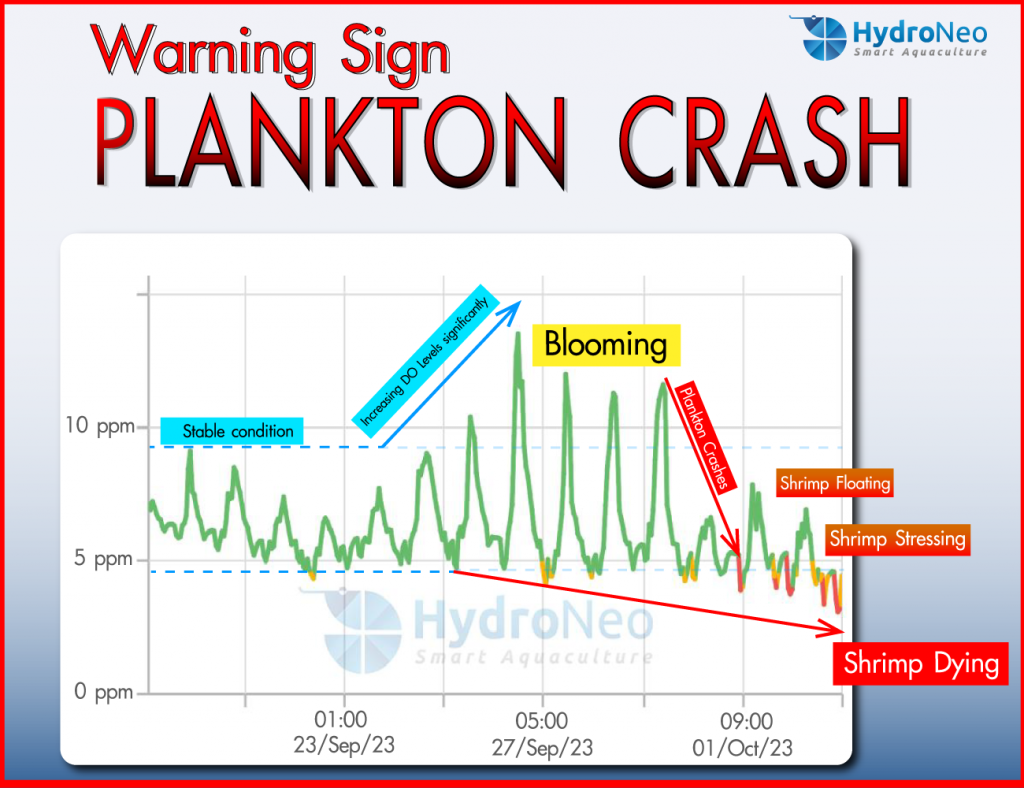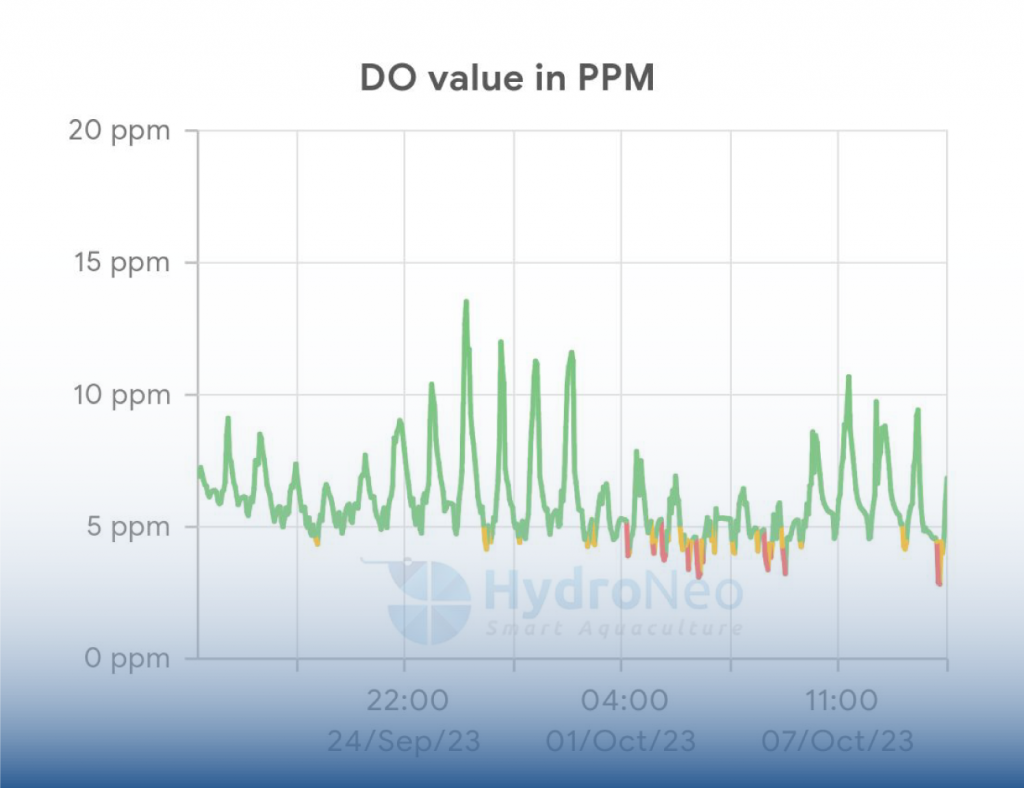Plankton is a crucial component of the aquaculture ecosystem, especially in shrimp farming. These microscopic organisms not only serve as a primary food source for young shrimp but also play a pivotal role in maintaining water quality by increasing dissolved oxygen levels. A healthy plankton population is essential for the success and sustainability of aquaculture, especially shrimp farming operations. However, when a Plankton Crash occurs, it can have devastating consequences. In this blog, we will explore the warning signs of a Plankton Crash, its impact on shrimp farming, and effective prevention and management strategies.
Warning Signs of a Plankton Crash
- Water Clarity Changes: One of the most noticeable warning signs of a Plankton Crash is a change in water clarity. If you observe that your pond water is becoming increasingly turbid or cloudy, it may indicate a decline in plankton populations. This reduced clarity can result from the decreased abundance of plankton.
- Floating Shrimp: Careful observation of shrimp behavior can also provide crucial clues. During a Plankton Crash, shrimp may exhibit abnormal behavior, such as floating near the water’s surface. This is a sign that they are struggling to find an adequate oxygen, as plankton population has increased. If you face this behavior, you should use a chemical like MgO to oxygenate the water. Additionally, magnesium can serve as a nutrient source for shrimp during molting.
- Fluctuating Dissolved Oxygen Levels: Plankton plays a pivotal role in oxygen production through photosynthesis. When a Plankton Crash occurs, the oxygen levels in the pond can become unstable. They might initially rise due to increased photosynthesis during the day but fall significantly during the night. These fluctuations in dissolved oxygen levels can stress shrimp and other aquatic organisms.
Preventing and Managing Plankton Crashes
Based on the practices of HydroNeo’s customers, aquaculture experts, and research development team, here are effective strategies for preventing and managing Plankton Crashes:
- 24/7 Oxygen Monitoring: Implementing a continuous oxygen monitoring system is crucial. This technology allows you to track dissolved oxygen levels in real-time, enabling you to take timely action if fluctuations occur. You will receive alerts on your mobile phone and alarms on your farm. Early detection is key to preventing a Plankton Crash.
As you can see from a graph of HydroNeo’s Smart Farm management system, there’s real-time dissolved oxygen (DO) monitoring. DO levels have their own cycle: they rise when we turn on the aerator and decrease when shrimp and plankton use dissolved oxygen for respiration. We refer to this situation as a ‘Stable Condition.’ However, when DO levels increase significantly, it indicates something different from the stable condition. Yes, it signals an increase in the plankton population, and after two hours, plankton bloom begins. At this point, the maximum plankton population in that area is reached, and since all the plankton use oxygen, it may cause the overall dissolved oxygen levels to drop rapidly.
2. Automated Aeration: HydroNeo’s automated aeration systems can help maintain stable oxygen levels in the pond. These systems can adjust the aeration rate based on the collected dissolved oxygen (DO) data, ensuring that DO levels remain within the optimal range.
3. Feeding Management: Carefully manage your feeding practices to avoid overfeeding. Overfeeding can lead to an excess of nutrients in the water, disrupting the ecosystem balance and increasing plankton populations. Utilize HydroNeo’s feeding charts and guidelines to ensure you provide the right amount of feed.
4. Water Exchange: Regular water exchange is essential to dilute excess nutrients and maintain water quality. Depending on the specific needs of your aquaculture system, perform partial water changes as recommended by experts or based on your continuous monitoring data. This practice can help reduce nutrient buildup, preventing the overgrowth of plankton and promoting a healthier aquatic environment.
5. Emergency Response Plan: This plan should outline steps to mitigate the impact on your aquaculture operation.
A Plankton Crash can have severe impact in aquaculture, especially in shrimp farming. Monitoring, aeration, and feeding management are essential components of a comprehensive strategy to prevent and manage Plankton Crashes. Remember that a healthy and optimal plankton population is the cornerstone of successful shrimp farming, contributing to both the growth of your shrimp and the overall sustainability and profitability of the aquaculture industry.
Have you encountered Plankton Crashes in your shrimp farming experience? Share your insights and strategies in the comments below. Let’s learn from each other and continue to thrive in the world of aquaculture! 🌊🦐




